Inside Emosson dam
Bordering the French and Swiss Alps, Emosson dam overlooks Mont Blanc from 1965 metres above sea level. From the Chamonix valley, visitors can drive up to the dam or of catch a series of interesting trains. I drove up, entering cloud at the car park which burnt off within the hour.
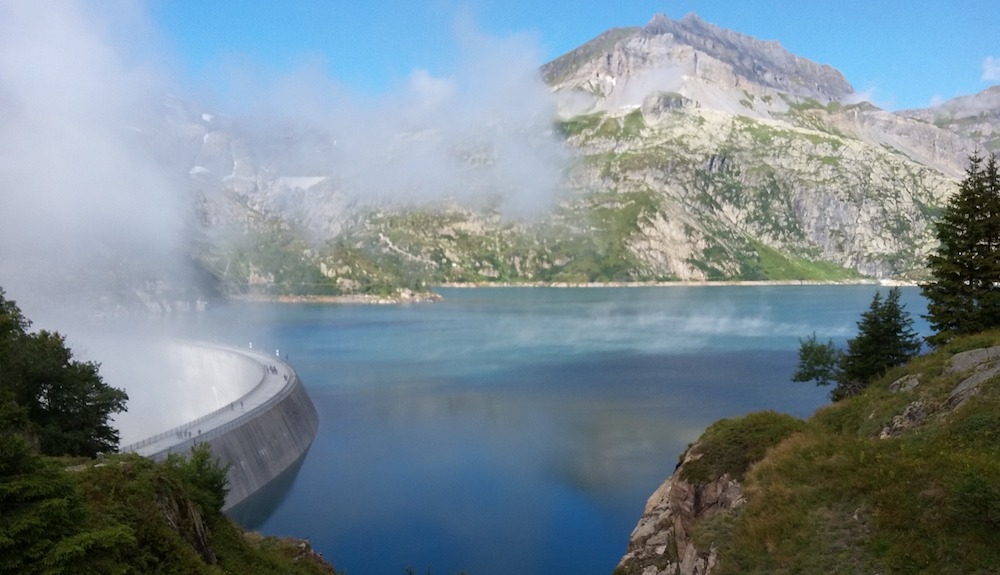
Hikes, distant dinosaur footprints and magnificent views abound, as well as an under-advertised tour of the interior of the dam wall, which I took. Although there’s no descent to the turbine in the tour, I was not disappointed. The tour took about hour and a half and cost around 10 Swiss Francs. With a group of Swiss tourists, we started in a room with miniatures showing different parts of the dam, with interesting explanations. We entered the tunnel at 1926 metres altitude and walked the length, stopping along the way at information points and learning about the different measuring devices that constantly monitor and record the tiniest of movements.
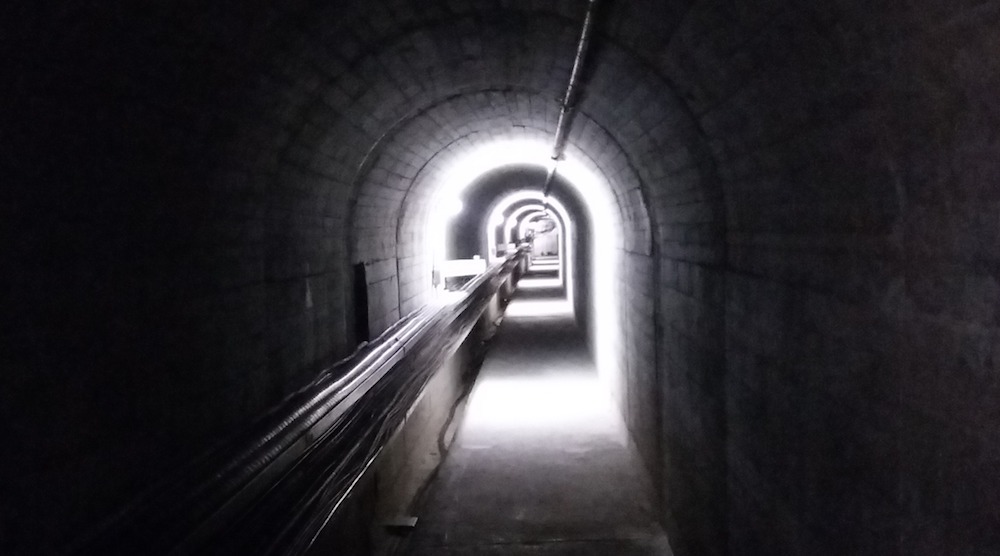
One surprising fact is that metal is never used in the concrete constructions of dams. The porous concrete would keep any metal wet, causing it to rust. The concave shape both vertically and horizontally provides the strength against the water on the other, convex side of the dam wall, and the water actually ensures the structure remains stable. The concrete has some elasticity, allowing the dam to move up to 30cm under normal conditions with varying water levels.
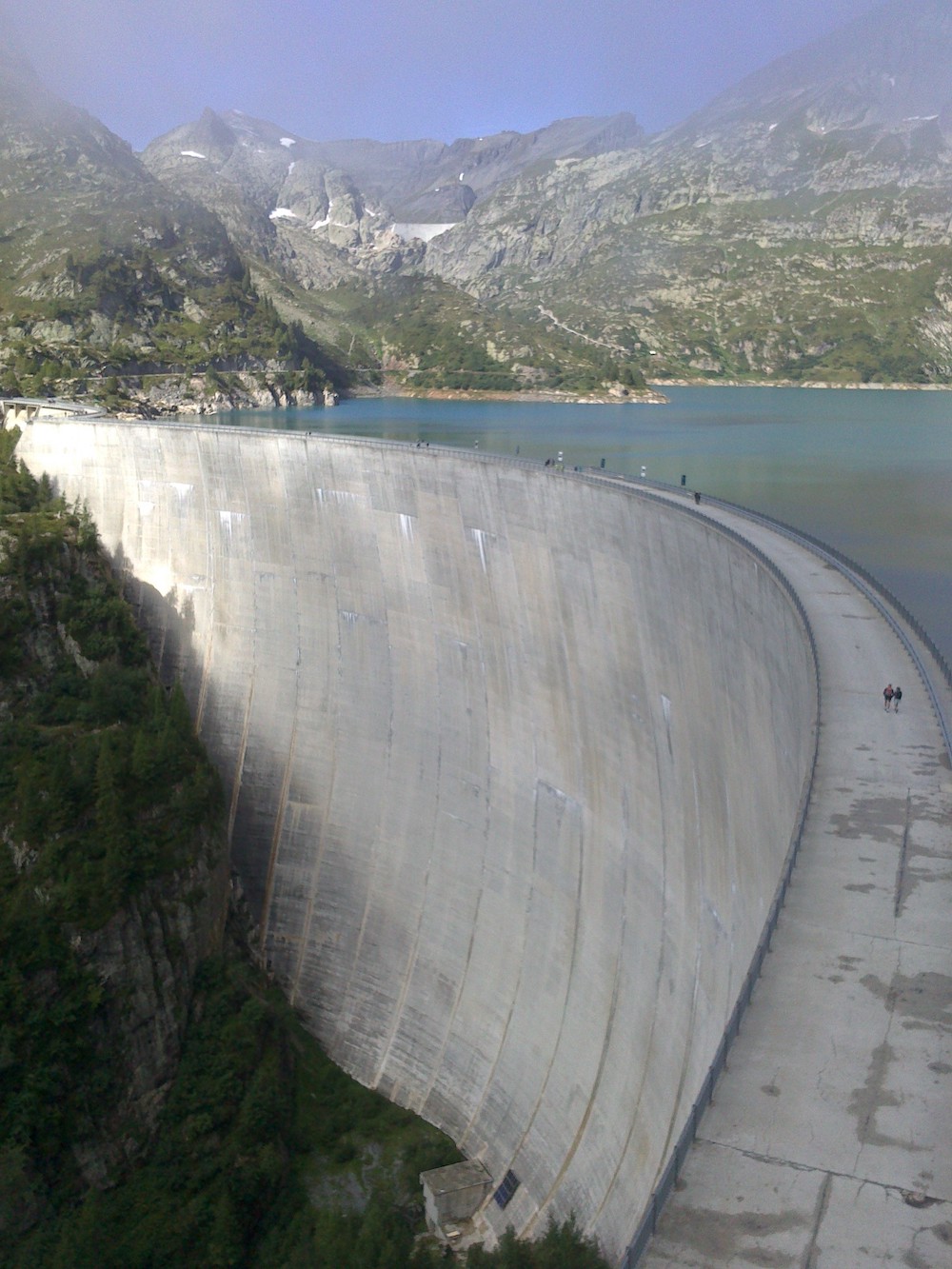
Any structural movement is measured and recorded within microscopic accuracy, with stations dotted along the length and depth of the damn interior walls. The dam wall was built in front of a smaller, older dam which remains in place but hidden in the middle of the dam, 40 below the typical water level. There’s also an old, flooded chapel which was built in memorial to those who lost their lives in a border battle between the Swiss and the Savoyardes before the old dam was built. It’s suffered structurally under the water, and a replacement memorial chapel was built on a hill near the dam.
Thankfully, the battles are over, and in order to build this dam, which was on Swiss land, but drops down into France, both countries offered the other a small section of land and share the electricity created by the hydroelectric system.
Fans of Le Tour de France might also recognise this dam wall as the finishing line of stage 17 of the 2016 Tour de France. Tour buses accessed the dam and picked up the riders, then descended via an tunnel dug through the mountains with an exit in the valley further down below, normally reserved for use by the electricity companies.
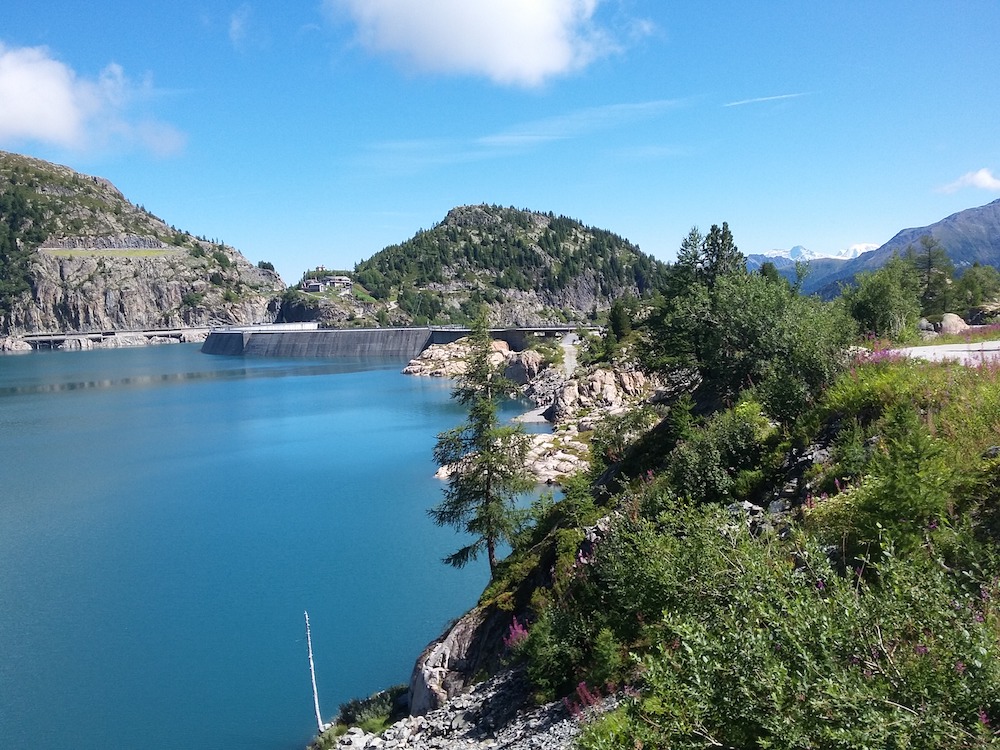
Arriving at the far end of the barrage and back in daylight, our tour guide pointed out the old building sites and areas, such as the replacement chapel, an old summertime-only road used by the dam constructors and le bel oiseau — a natural rock formation on a higher nearby hill that resembles a bird in flight.
After the tour, my travel partner and I hiked to another, higher dam (Le Vieux Emosson), visible from the first one. With the choice of rugged mountain path or paved road, we opted for stones and wild flowers. This is definitely not a path for someone with vertigo (like me!) but once we got to the steeper sections, there was no turning back. Marked as a one-hour hike, it took us around three hours, with a long stop for a lunch with a view, and many stops for adjusting my feet and not looking down.
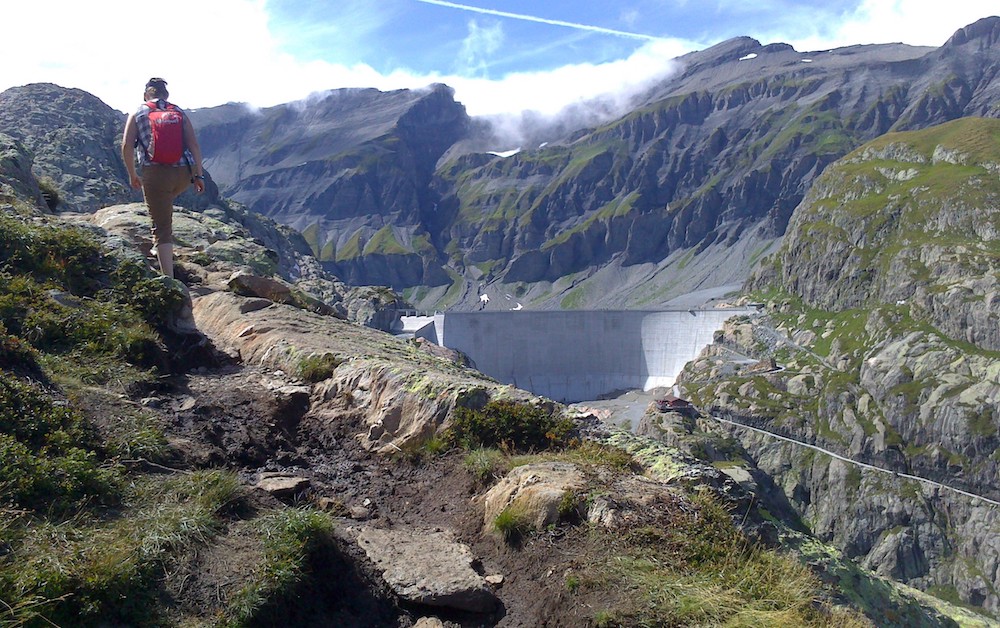
There was plenty to look at — an abundance of wormwood flowers (the plant that gives that special taste to genepi, chartreuse, vermouth and other mountain drinks), a large section of snow to traverse, a broken wooden access bridge that required an alternative route over the trickling stream, and these fluffy white flowers.
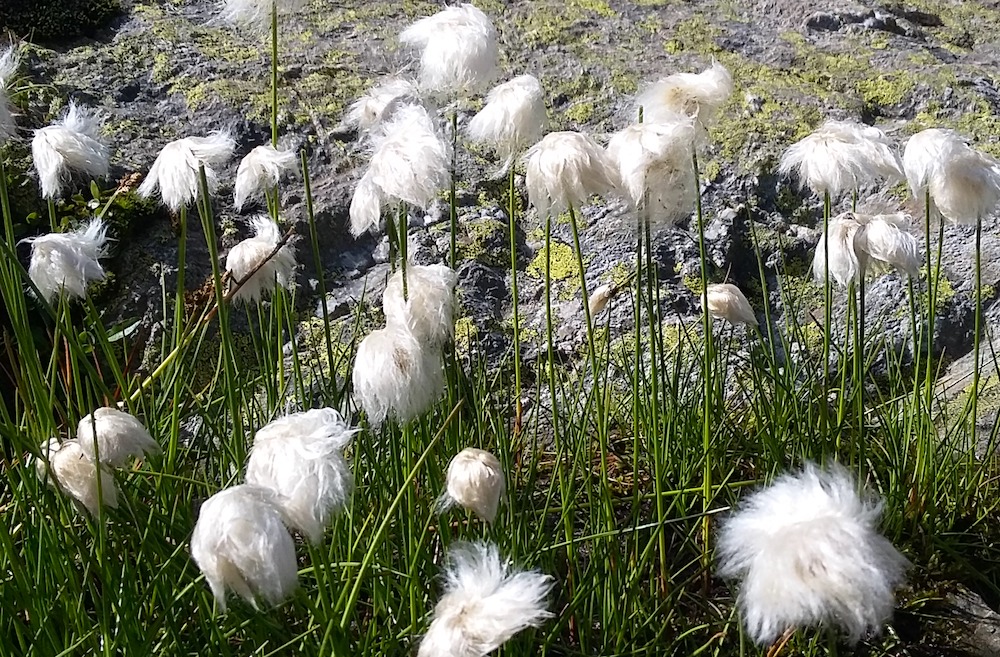
From the higher dam wall, the view to the dam below is ridiculously beautiful. In the foreground is a small mountain refuge — the perfect place for a quick drink or snack before the final climb to the dam wall. In the distance is the first dam, where the walk began. The mountain hike wound in and out the rocks to the right. For the descent, we chose the paved road on the left.
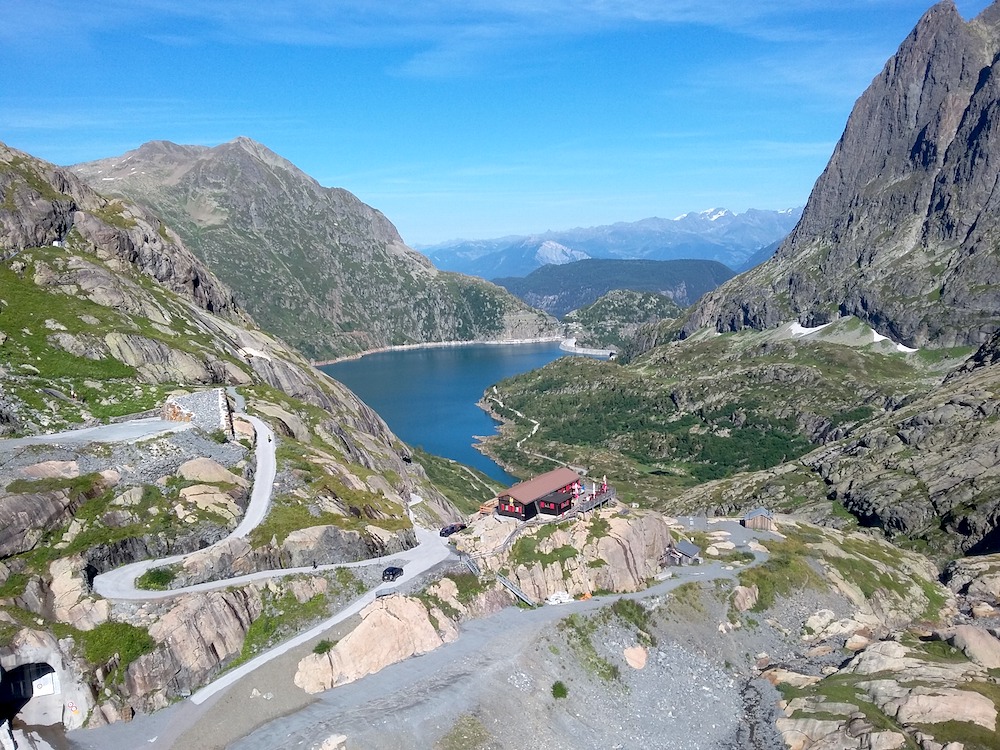
The paved descent was certainly faster and easier than the rocky hike up, but taking such a narrow road in a car demands a certain level of confidence and ability of the driver: there are no places to overtake, and passing pedestrians must also be tough at times. Then there’s this natural rock tunnel. The dot you see in the distance is a person. The tunnel is not high nor wide, yet cars manage to get through.
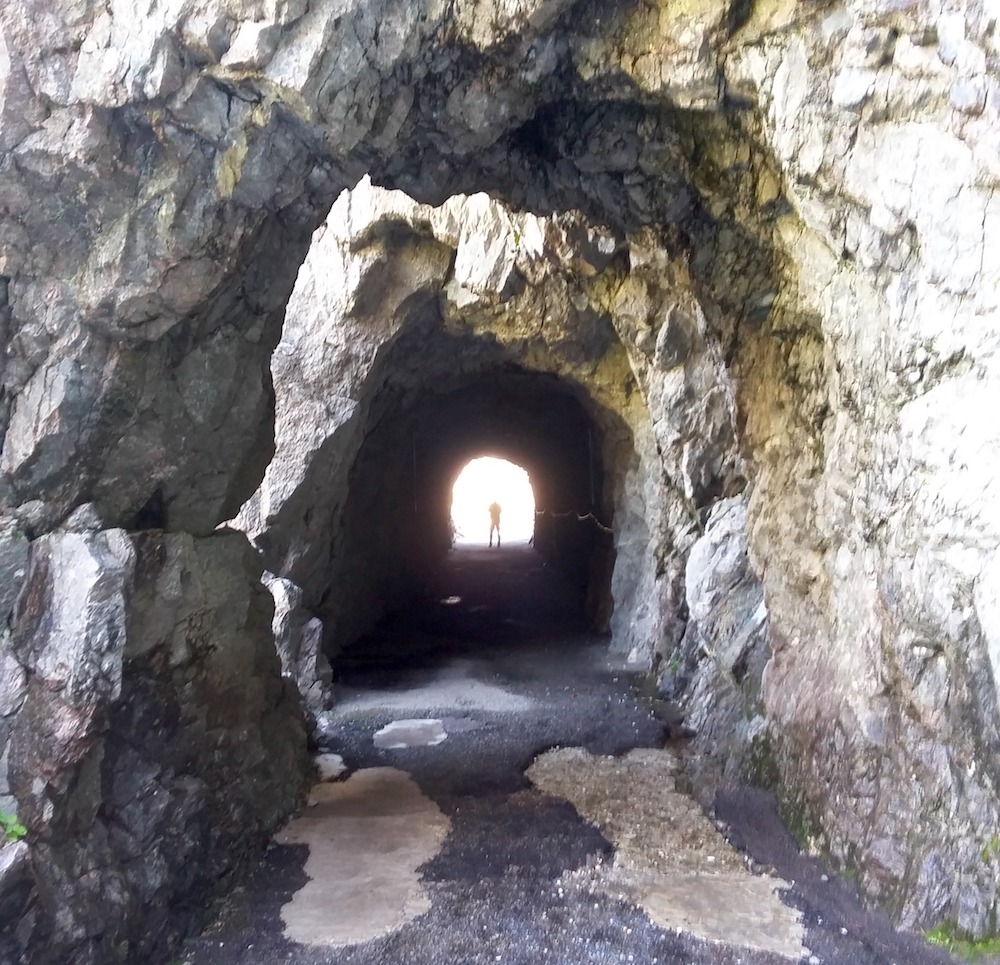
The paved road is still picturesque, with stunning scenery in front and behind along the way.
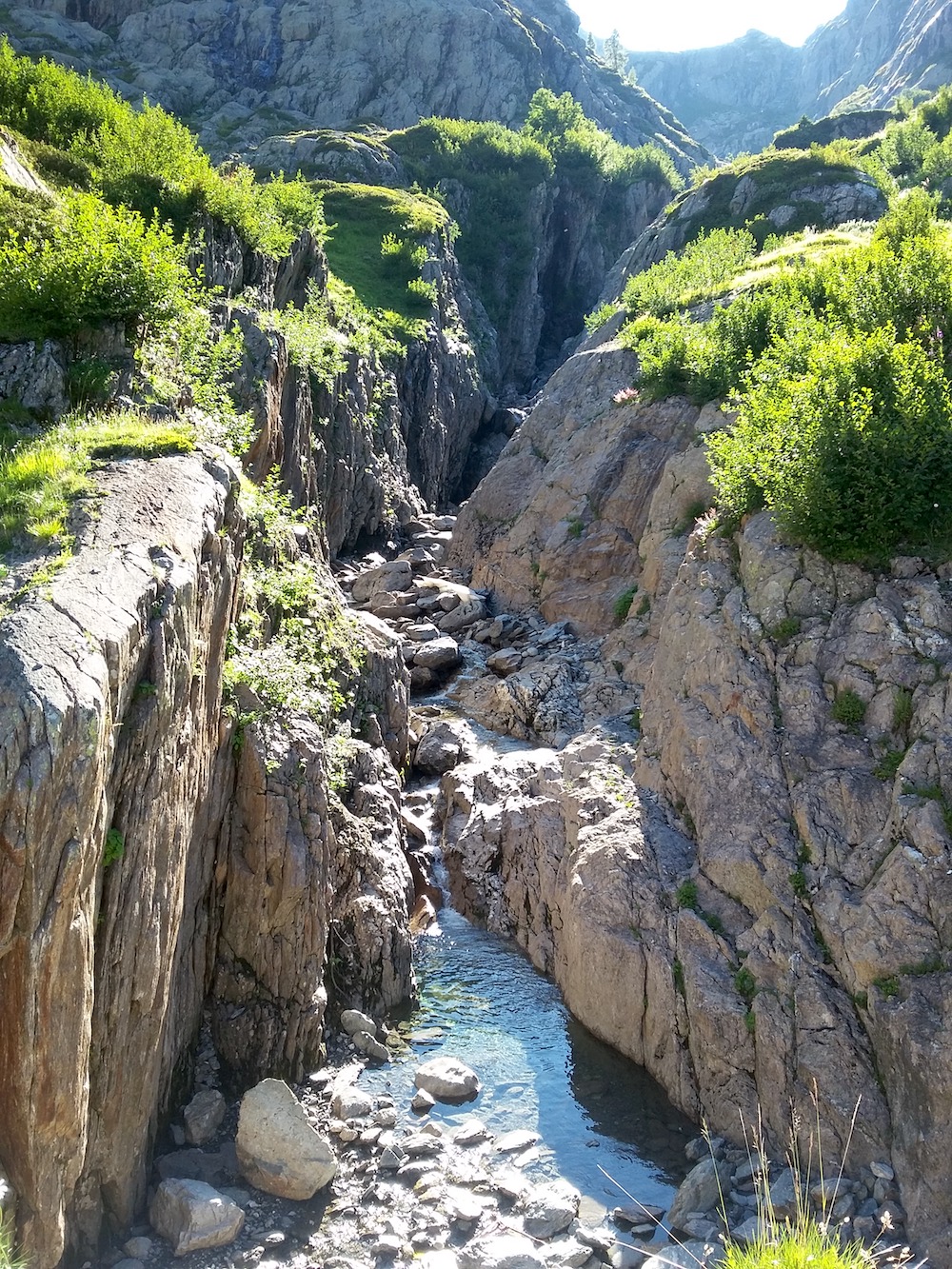
Alas, we spent so long exploring that we ran out of time for a ride on the Mini-funic funicular — a good excuse to return next year (it’s closed over the snowiest months of the year).
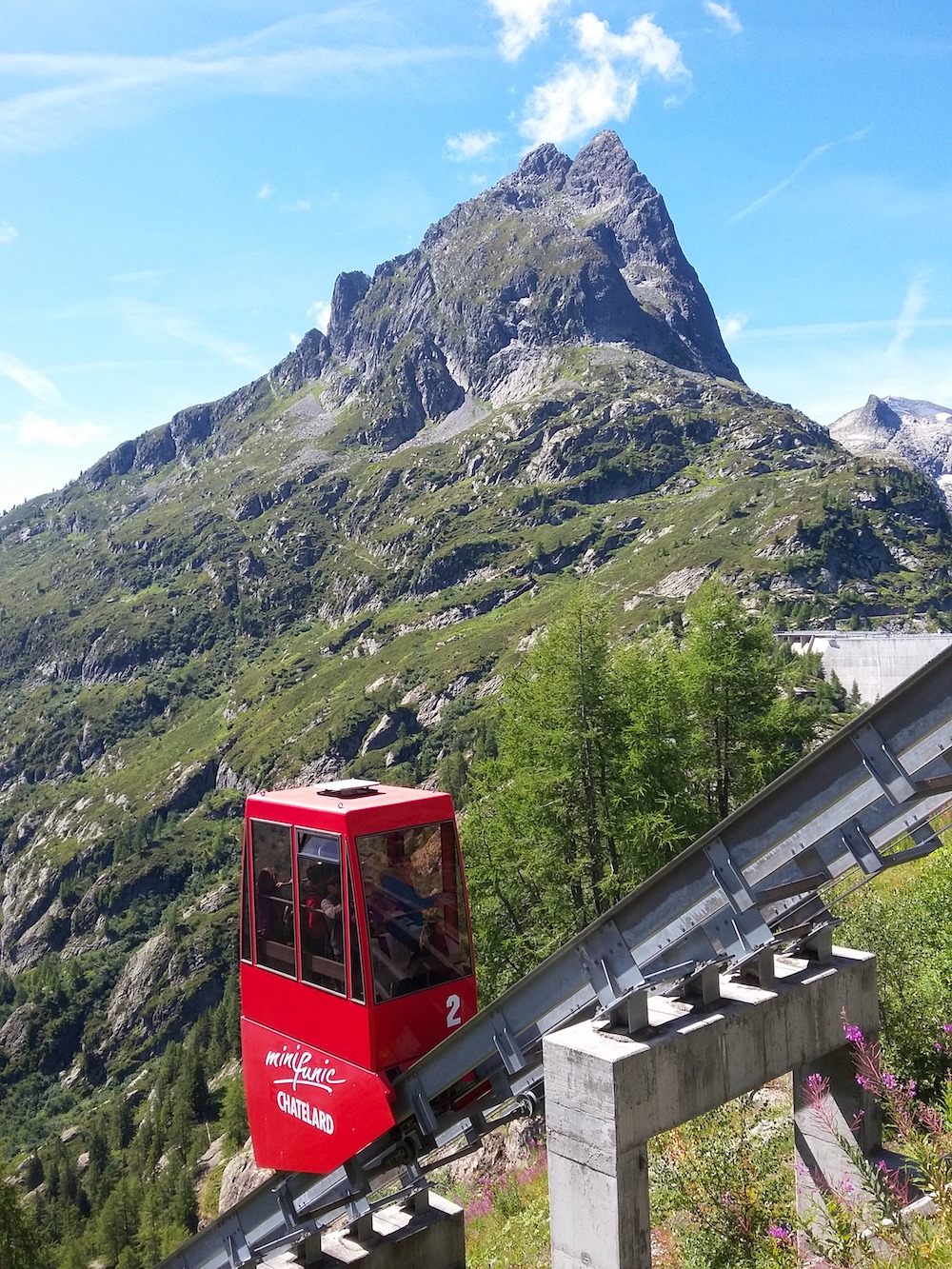
Back at the first dam, we were rewarded with gorgeous afternoon views overlooking Mont Blanc, providing the perfect end to the perfect day.
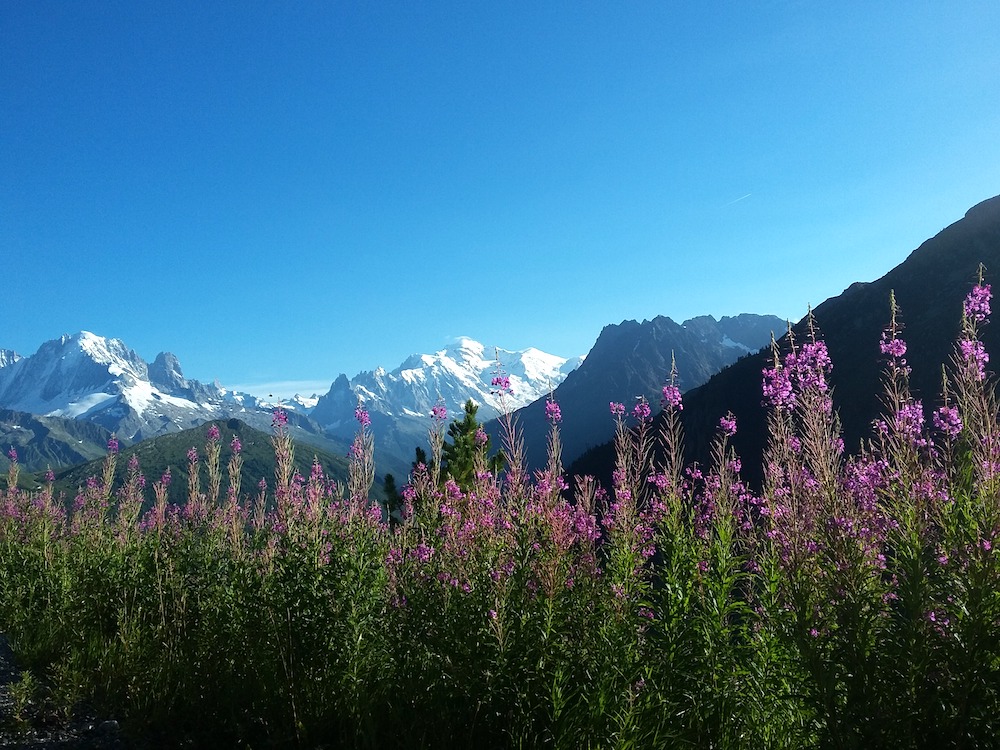
 Copyright protected by Digiprove
Copyright protected by Digiprove
Gorgeous photos! It’s been over 8 years since I was in the Alps, so I love seeing them.
Thanks! It’s really difficult to take a bad photo in this place. I highly recommend a visit next time you make it to the Alps (along with every other village I’ve been to in the Alps!!).